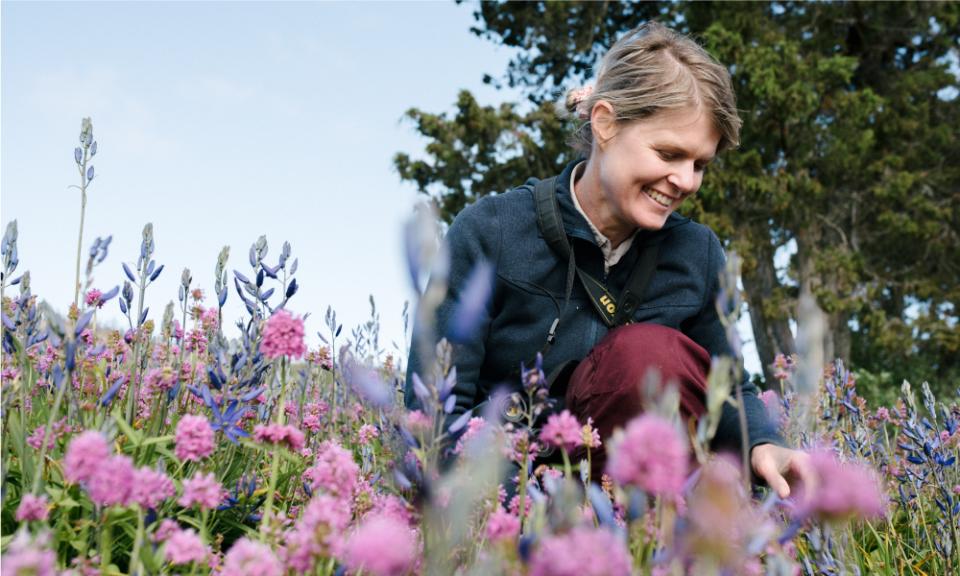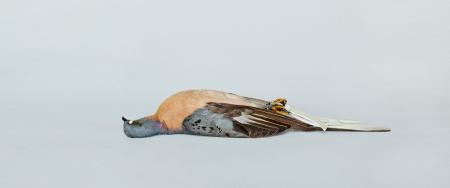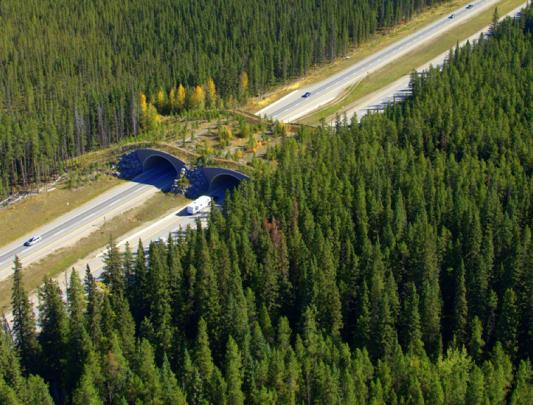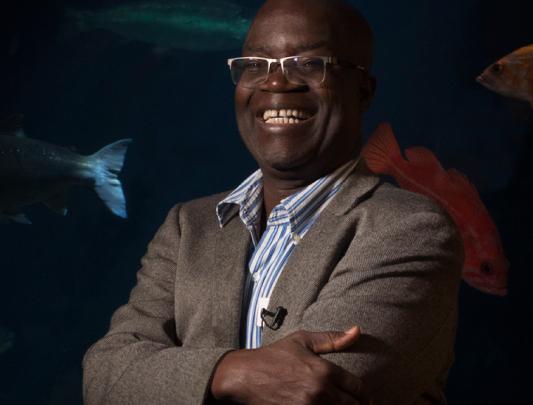Prof develops tool for prioritizing conservation efforts
English grads might remember the immortal words of Captain Boyle in Seán O’Casey’s masterpiece, Juno and the Paycock: “I’m telling you, Joxer, the whole world’s in a terrible state of chassis.” His wife Juno and his daughter have left him, his son’s been murdered and the inheritance he was promised has disappeared. His life lies around him in ruins.
It’s not an inapt observation for our own time. Climate change, unchecked resource extraction, industrial and big city pollution, ocean acidification and a litany of other environmental disasters would indicate that our world, indeed, is in a “terrible state of chassis.”
Captain Boyle had no means – emotional, physical or financial – to get himself out of the impossible situation he’d created for himself. We, on the other hand, can intervene in our own destruction and change conditions for the better.
One such intervention involves a forthright, honest and clear-headed vision about how we should go about saving endangered species. It does, however, come with some obstacles.
“We’re not doing very well saving at-risk species,” says Dr. Tara Martin, a professor in the department of Forest and Conservation Sciences and head of the Martin Conservation Decisions Lab. “We often spend the majority of our budget on species with a low likelihood of recovery at a high cost. If our objective is to save as many species as possible, it’s not a good way to spend our conservation money.”
Martin points out that we spend our own money in a much more analytical way: how much does an item cost? Will it solve the need we think we have? Would a different item be a better bet? Am I taking away from other essential resources? “The strange thing is that we haven’t been doing that kind of analysis in conservation. We’ve been shopping without price tags, assuming that we have infinite resources to do everything, everywhere.”
Cost is important, but it’s difficult to know what the price tag would be. “We need more money for species conservation and recovery,” she says, “but how much more? We have no idea what it would cost to save every species at risk in Canada.”
Dr. Martin and her team have developed a process that asks these key questions about at-risk species. The Priority Threat Management tool assesses the likelihood that a particular species can be saved and identifies the management strategies that will recover the most species for the least cost. The process examines a group of at-risk species in a region and determines what conditions are causing the species’ decline. Then, it analyses the interventions that could be done to either eliminate or mitigate those conditions, and estimates the costs of the interventions. Next, the researchers estimate the probability that those interventions, were they to be accomplished, would actually save the species from extinction.
Canada passed the Species at Risk act in 2002, and since then has listed more than 600 plants and animals at risk of extinction. The act requires the federal and provincial governments to do something to protect all these species, but doesn’t spell out how that should be done, nor does it estimate how much it would cost to do so. As a result, different government agencies and non-government organizations try gamely to save some of these species, and while some efforts are successful, others are not. Wildlife Preservation Canada, for one, has been marginally successful with its programs to save the Oregon spotted frog and the western painted turtle. The burrowing owl population in Southwest Saskatchewan, on the other hand, a poster child for soon-to-be-extinct creatures in Canada, continues to decline in spite of ongoing efforts to save it.
And that’s the crux of the problem. The burrowing owl is a spectacular creature, emerging from its ground-level nest to soar to great heights above the prairie in search of prey. But, with fewer than a thousand breeding pairs, it’s in great jeopardy and the likelihood of saving it is in doubt. With widespread loss of habitat, pollution, and the fact that it migrates between here and Mexico, there’s little that can be done unilaterally by Canada that would change the conditions of its existence. Yet, money is still being spent on its survival.
To date, the Priority Threat Management tool has been applied to a third of the Australian continent including the entire state of New South Wales. Case studies are also being undertaken in Southwest Saskatchewan, Saint John River in New Brunswick, the Fraser River Estuary, the Kootenay Bioregion and along the BC Central Coast and its salmon population. (See www.taramartin.org/research/ for details of current projects.)
“If we can increase the probability of recovering species to greater than a coin toss, then it may be possible to save a species,” says Martin. “If there are no management actions that will increase the probability of recovery to more than 50 per cent, it’s unlikely that any effort will save the species, and we’re better off investing in species that have a greater probability of recovery. We might still decide to invest in species that have a low likelihood of recovery because we value that species highly and we’re willing to take the risk of failing. But we need to be explicit about that.”
One of the main criticisms of using Priority Threat Management is that it relies on an economic model to determine which actions will save the most species for the least cost. This criticism holds that the ultimate decision to invest money in a particular species should be social, reflecting the values, cultural traditions and social benefits a species may have. And since we don’t fully understand the relationships particular species have to their environment – how the survival of one species may depend entirely on the survival of another – it’s not reasonable to base those decisions solely on economic criteria.
Another criticism of Priority Threat Management is that it provides incentive to industry to push some species to the point where their protection would be deemed too costly and unlikely to succeed. As well, critics say it gives some support to the idea that the efforts to save some species will have an adverse effect on a given industry, imperilling the economy and destroying jobs.
Martin stresses that some critics are misinterpreting the purpose of the Priority Threat Management analysis. She points out that the tool does take social values into consideration in its computations, as well as environmental and economic ones. The southern resident Orca whales in the Salish Sea are a good example. These creatures have high value to coastal indigenous peoples, and are a valuable tourist resource. But saving the killer whales also involves rescue plans for the salmon they feed on, developing strategies to deal with ocean warming, carbon sequestration and ocean stratification, and ensuring that both the tourism industry and indigenous cultures are part of the mix.
She also notes that the analysis doesn’t suggest giving up on a species because it is too expensive. Rather, if it determines that no amount of management activity or investment will save a species, it makes no sense to continue funding rescue attempts. “This happens when we leave it too late to act,” she says. “For example, it’s been 16 years since the southern mountain caribou was identified as at-risk, but no strategy has been developed to recover the species. During this time critical habitat has continued to be fragmented by industrial logging, recreational activities, oil and gas development and the effects of climate change. These long delays serve industry rather than species, and allow business-as-usual to continue unabated. By the time an action plan is produced, it may be too late because the population has continued to decline and there may be insufficient habitat left to protect. By contrast, our approach is fast and inexpensive in comparison to action plans produced under the Act.”
Since passage of the Act in 2002, the situation for the vast majority of the 600-plus at-risk species or environments has either stayed the same or become even more dire. In response, the federal government has pledged $1.3 billion for the cause. But how this money will be used is hard to determine. Two federal entities – Fisheries and Oceans and Environment and Climate Change Canada are responsible for managing the money. Martin is hopeful the Priority Threat Management tool can be applied going forward.
“We’ve spoken to provincial and federal departments and made many presentations and even undertaken a case study together in Southwest Saskatchewan,” says Martin. She reports some resistance to change, and an unwillingness to give up certain approaches. As well, the Priority Threat Management process is very transparent, so there’s some fear of backlash over the unavoidable tradeoffs it would present. Still, she’s seeing some positive response from government.
NGOs, she says, are extremely interested. Projects are underway with the World Wildlife Fund, the Pacific Salmon Foundation, the Lower Fraser Fisheries Alliance (comprising 22 First Nations), the Central Coast Indigenous Resource Alliance (comprising four First Nations), the Raincoast Conservation Foundation and The Nature Conservancy.
In spite of the work being done, is it too late? “It is too late for some species. But it’s not too late for many, many more. There is a better way of doing things, a more timely and effective way of determining how we can be more successful with the resources we have. We have to make decisions now with the data we have at hand.”
It may well be time to cut our losses and invest in the species we have a chance to save. The Priority Threat Management tool is one way of focussing on the at-risk species that have a chance rather than on ones that are lost.
Or as Juno Boyle says in Juno and the Paycock, “It’s nearly time we had a little less respect for the dead, and a little more regard for the living.”
The Fraser River Estuary
The Fraser River Estuary, with its three million people, industrial centres, agricultural productivity, salmon fishery and historic First Nations culture, is home to more than 100 species considered at risk. Most at-risk species have a reasonable chance of survival, including the southern resident killer whale.
“In the Fraser River Estuary,” says Dr. Tara Martin, “we estimate that an investment of $350 million over 25 years will be needed to give these species a chance to survive.”
Governments might shudder at such a cost, but, as Martin points out, the economic advantages of a healthy ecosystem and flourishing flora and fauna benefit all aspects of the economy. A healthy killer whale population, for example, attracts millions of dollars for the tourism industry.
At risk species in the Fraser River Estuary include:
- White sturgeon (Lower Fraser Valley)
- All salmon species
- Orca (southern resident population)
- Dungeness crab
- Western bumblebee
- Townsend’s big-eared bat
- Hoary bat
- Barn swallow
- Peregrine falcon
- Barn owl
- Western sandpiper
- Harlequin duck
- Common loon
- Purple martin
- Great blue heron






































